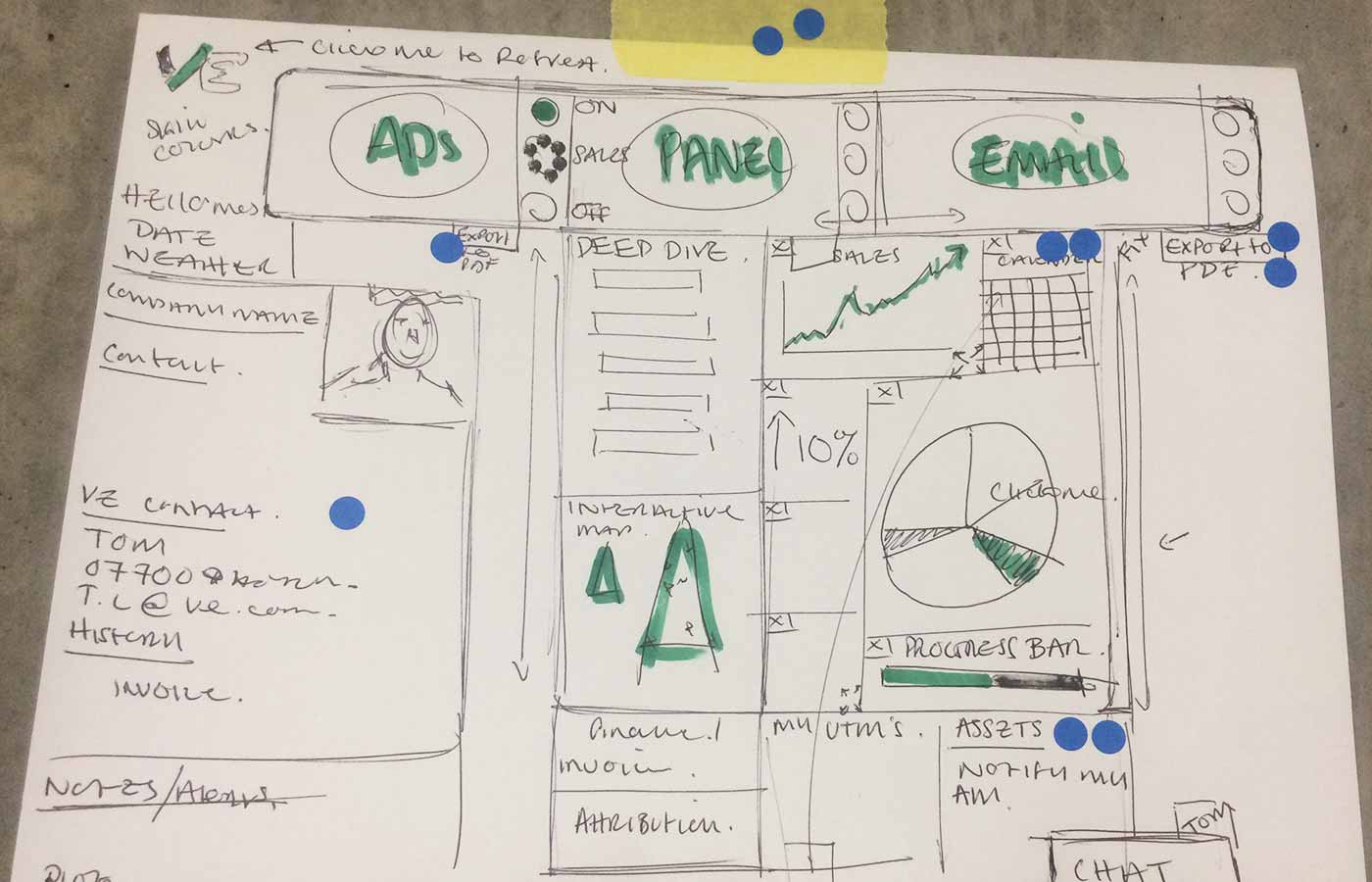UX Design Process
This guide offers a walk-through of the UX design process. It covers design methodologies, tools and ways of working within cross-functional teams.

Introduction
Each chapter of this guide will explain each design process stage, discuss key activities and provide links to further reading and resources. This guide is by no means exhaustive, but rather aims to provide an introduction to the key concepts of user-centred design.
The guide sets out a framework for tackling a design project. However, each case is unique and your approach should be adapted based on business requirements and / or technical constraints.
We have based our framework on the double-diamond design process, mixed with Lean UX principles and Agile methodologies. It is our design process for enhancing and optimising the experience that a user has with a product.
User experience
User experience (UX) is centred on increasing a users' satisfaction when interacting with a product. It focuses on improving usability and pleasure, encompassing a range of user-centred design methodologies, many of which are discussed in this guide.
User experience encompasses all aspects of the end user's interaction with a company, its services and its products.
The first requirement for an exemplary user experience is to meet the exact needs of the customer, without fuss or bother. Next comes simplicity and elegance that produce products that are a joy to own, a joy to use.
True user experience goes far beyond giving customers what they say they want, or providing checklist features. In order to achieve high-quality user experience in a company's offerings, there must be a seamless merging of the services of multiple disciplines, including engineering, marketing, graphical and industrial design, and interface design.
It is important to distinguish the total user experience from the user interface (UI), even though the user interface is obviously an extremely important part of the design.
The user experience development process is all about ensuring that no aspect of the user's experience happens without your conscious, explicit intent. This means taking into account every possibility of every action the user is likely to take. And understanding the user's expectations at every step of the way through that process.
It sounds like a big job, and in some ways it is. But by breaking the job of crafting user experience down into its component elements, we can better understand the problem as a whole.
Jesse James Garrett, co-founder of Adaptive Path, offers a comprehensive summary as part of his 'The Elements of User Experience' writing:

Double Diamond
The Double Diamond is an approach to the design process - mapped out by Design Council. Using this framework, the design process is divided into four phases - Discover, Define, Develop and Deliver. The activities described in this guide are structured within these four phases, diverging and converging, from a problem to a solution.
Divergent thinking enables multiple ideas and directions to be considered and explored. Before convergent thinking to refine and narrow down to an optimal solution.
Practical design methods will move a project through the four phases of the Double Diamond. These will be discussed in more detail throughout this guide.
It is important to remember that the design process is not linear. Whilst product design involves moving through each of the four phases, you should always look to go back to re-define, test and explore new approaches following delivery of a solution. This is a key aspect of the 'build-measure-learn' approach to product development. Responding to learning from real users in the market to adapt and improve the product.

Lean UX
Lean UX focuses on obtaining validated learning from real users. Rather than a focus on deliverables. It's centred on cross-functional collaboration and obtaining user feedback as early as possible to make decisions. Agile development allows for rapid, iterative cycles, Lean UX ensures insights can be used to drive decisions for each iteration.
Lean UX shares core values with Agile development. Whilst also setting out principles to guide team organisation, culture and process.
Lean UX & Agile development
- Individuals and interactions over processes and tools.
- Working software, over comprehensive documentation.
- Customer collaboration over contract negotiation.
- Responding to change over following a plan.
Team organisation
- Cross-functional teams.
- Small, dedicated and co-located.
- Self-sufficient and empowered.
- Problem focused.
Culture
- Move from doubt to uncertainty.
- Outcomes, not output.
- Remove waste.
- Shared understanding.
- No rock stars, gurus or ninjas.
- Permission to fail.
Process
- Work in small batches to mitigate risk.
- Continuous delivery.
- GOOB (get out of the building).
- Externalise your work.
- Making over analysis.
- Get out of the deliverables business.


